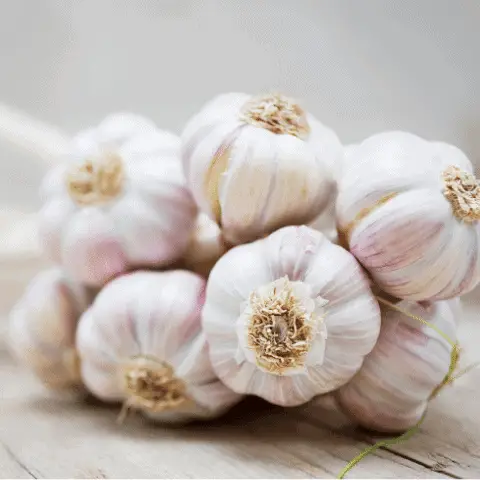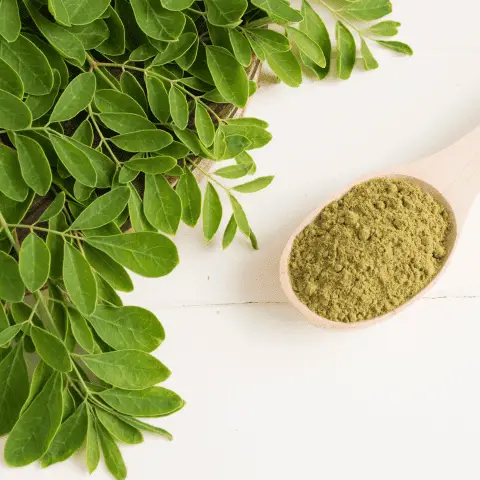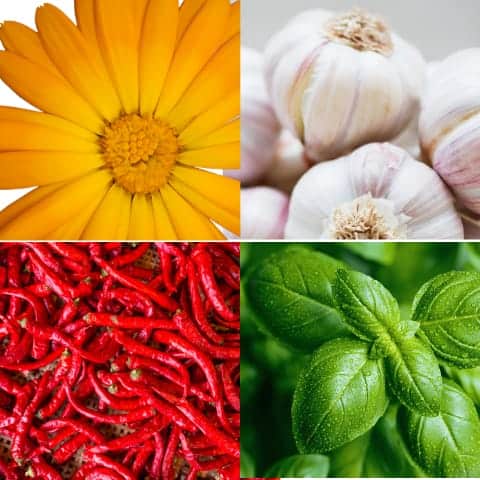Did you know that plants can be used as pesticides? It’s true! They are called “botanicals.” In fact, there are 14 common botanicals you can use to protect your garden from pests.
Not only are botanicals effective, but they’re also easy to make at home. In this article, we’ll introduce you to these 14 natural pest control solutions and give you recipes for how to make them yourself.
Say goodbye to harsh chemical pesticides and hello to the power of plants! Let’s explore the world of botanical pest control together.
Botanicals: A naturally-Sourced Pesticide
Botanicals, also known as botanical pesticides, are plant-derived pesticides made from dried, ground plant material or extracts. They offer a natural alternative to synthetic pesticides.
One of their key advantages is that they are organic and environmentally friendly. Unlike synthetic pesticides, they decompose naturally without releasing harmful toxins into the soil. In fact, farmers have been using botanicals for centuries for their pest control properties.
So, if you’re looking for a safe and effective way to control pests, botanicals may be the perfect solution for you.
14 Recipes of Organic Pesticides You Can Prepare At Home By Using Your Plants
Say goodbye to expensive pesticides and hello to effective, affordable solutions. You can easily create your own insect repellent using simple ingredients that are easy to get.
To help you get started, we’ve compiled a list of the 14 most common botanicals for homemade pesticides. And the best part? We’ve included recipes, so you can start making your own pesticide right away!
- Hot pepper: One of our favorite botanicals is hot pepper. Not only is it a natural insect repellent, but it can also keep rabbits and squirrels at bay. What’s the secret? Capsaicin, the chemical that gives hot peppers their heat, is the active ingredient. And the efficacy of this pesticide can last up to three weeks!
Try it out for yourself and see the power of natural pest control with these easy-to-follow recipes.

How to make a hot pepper spray:
If you want to make hot pepper spray, here’s what you need to do:
- Put around 7-8 hot peppers in a blender.
- Add 2 cups of water and mix them.
- Pour the mixture into a jar and let it sit for a day.
- Strain the liquid into a spray bottle.
Remember to wear gloves when handling hot peppers! This simple recipe will give you an effective and natural insect repellent in no time.
2. Neem Oil (aka Neem Extract): Are insects or fungal outbreaks wreaking havoc in your garden? Then you need to know about Neem Oil! Extracted from the seeds of Azadirachta Indica, a tropical tree found primarily in Southeast Asia and India, this oil is an amazing defense against aphids, beetles, fungus gnats, and caterpillars. Not only does it zap pesky bugs, but it’s also effective against leaf diseases such as black spots, rust, and powdery mildew. The best part: all without killing them which makes for safe spraying around vegetables grown for consumption too!
How to make Neem oil spray: Making a spray out of Neem oil couldn’t be simpler – simply mix 4tsp with 2 tsp dish soap into one gallon of warm water, then shake well before using on plants directly!
It’s important to be careful with how much you use. A little can go a long way – applying too much could burn the leaves of delicate plants (such as ferns, for instance)! Use sparingly and enjoy all the benefits.
3. Garlic oil: Protect your plants from pesky insects with garlic oil! Mix it up with cayenne pepper to create a powerful, plant-friendly bug repellent that’s sure to keep the critters away. Gardening has never been so easy – and you’ll be able to enjoy a pest-free harvest in no time!

How to make garlic spray: For a natural and effective way to keep your plants pest-free, whip up this easy garlic spray! Simply mix one clove of garlic, one medium onion, one teaspoon of cayenne pepper, and one tablespoon of liquid Castile soap in a bowl with water. After waiting an hour for the mixture to infuse its powerful properties into the solution, strain it into a bottle – you can store it safely in your fridge for up to one week too. Learn more about how amazing garlic is at protecting against bugs from my article here.
4. Citrus oil: its oil coats and suffocate the insects; however, it is not as effective as other pesticides. It is harmless and can be used up to the day of harvest. It kills fleas, aphids, mites, fire ants, and house crickets.
How to make citrus oil: mix 1 cup of compost tea with 1 ounce of blackstrap molasses and 2 ounces of orange oil in a gallon of water. Shake vigorously.
Another well-known, effective organic pesticide is Orange Guard. The active ingredient is D-Limonene. The product is completely organic and safe to use around pets & kids.
5. Pyrethrins: the source of this pesticide comes from some chrysanthemum flowers. It contains chemicals that are toxic to insects, penetrating their nervous system and causing paralysis. They are commonly used against mosquitoes, ants, fleas, and flies. You can obtain Pyrethrum powder by crushing whole chrysanthemum flowers. Pyrethrins are used to produce chemicals known as Pyrethroids, which are man-made and are not approved for use in organic farming. In general, pyrethrin is low in toxicity to humans and pets. However, it can cause tingling or numbness when in contact with the skin.

How to make Pyrethrins Spray: pick 3 to 5 Chrysanthemum flowers and soak them in 1 gallon of hot water for about 1 hour. Strain into a spray bottle and add 1 tsp of dish soap. Shake well. Don’t forget to wear gloves during the preparation! Better to use this pesticide in the evenings, when bees and butterflies are not around, since it is very toxic to them.
6. Marigold: this plant is a beautiful addition to our garden and will keep aphids, mosquitoes, and other pests away. However, they will attract spider mites and snails as well. Besides being a great companion plant for potatoes, tomatoes, and basil, they are also a powerful pesticide.
How to make Marigold Spray: mix in a blender 10 marigold flowers together with 2 cups of water. Pour the mixture into a jar and let it sit for about two days. Strain into a spray bottle and apply directly to the plants affected.
7. Clove Oil: is scientifically known as Eugenol oil. Clove oil is very effective in weed control, specifically wide-leafed weeds.
How to make clove oil weed spray: mix 10 drops of clove oil into water emptied into a spray bottle.
8. Vegetable Oil Spray: this very efficient pesticide can kill aphids, mites, and thrips by suffocating them. It is very easy to make at home.
How to make vegetable oil spray: mix 1 cup of vegetable oil with 1 tsp of dish or Castile soap. Shake well. Take 2 tsp from that mixture and add 1 quarter of water. Shake well and apply directly to the affected leaves.
9. Tomato Leaf Spray: Tomato plants contain alkaloids such as the “tomatine” which can control aphids and other small insects.
How to make tomato leaf spray: chop 2 cups of tomato leaves, put them into a jar with warm water, and let it sit for a day. Strain out into a spray bottle and apply.
10. Essential oils: Essential oils are becoming more and more popular for the purpose of repelling insects. They are extracted from different plants such as peppermint, rosemary, clove, wintergreen, and cinnamon. You can either use them either directly on the plant itself or pour it on the soil to protect the roots. Most essential oils are safe to be touched and smelled by humans, but you need to make sure they are out of the reach of children and pets.
11. Basil: is a natural insect repellent. Plant it close to tomatoes and squash. He is a great companion plant as well as a powerful insect deterrent. Thanks to its pungent smell it will keep away many types of bugs such as thrips, flies, and mosquitos.
How to make basil pesticide Spray: pour 1 cup of fresh basil, 1 tsp of dish soap, and 4 cups of water. Bring to boil and remove from heat. Let it sit for about 3 hours, then apply directly to the affected plant. It kills aphids.
12. Tobacco Bio-Oil: Tobacco Bio-Oil has been utilized for centuries as an incredible pesticide due to its toxic nicotine content. This powerful oil, created by heating tobacco leaves and is proven effective against 11 kinds of fungi, bacteria, and the Colorado potato beetle. It could prove beneficial for farmers whose livelihoods have suffered from decreasing demand in recent years – using one product’s harmfulness to their advantage!
13. Siam weed: Siam weed (Chromolaena Odorata) is considered one of the world’s most invasive weeds. However, it is also a very powerful pesticide, working very well, especially against cabbage pests.
15. Moringa Oleifera: Did you know that the tropical and subtropical areas of the world are home to a special tree known as Moringa? This amazing plant has incredible health benefits, with extracts taken from its leaves and seeds able to create an effective pesticide which helps protect against harmful insects. Its unique ability lies in inhibiting their digestive tract development – how cool is that?!

Are Pesticidal Plants Dangerous For Humans?
Even though they have an organic nature, botanicals should be used with caution since they could be toxic. They are not necessarily safer for humans and pets. In many cases they can cause allergies, rashes, and in some cases carcinogens. Also, it’s good to know that most botanicals have a wide spectrum efficacy and often can kill both good and bad bugs, indiscriminately. When using any botanical pesticides in the garden, always do it cautiously.
Are Pesticidal Plants Any Good?
From the dawn of creation, farmers around the world have fought off pests by any means necessary – and one way to do so has been through organic substances. Botanicals were likely some of our earliest tools in this war against pesky critters! For a time, synthetic pesticides ruled supreme until their effect on both environments and human health sparked bans like that for DDT back in 2004; however, natural alternatives are once again becoming favored as they prove more effective than insecticides while safer overall.
In conclusion, farmers have faced the challenge of pests throughout the centuries, and while sometimes artificial methods have seemed more effective at first, time has proven that natural remedies are ultimately far safer. Botanical plants may not always provide miraculous results, but their protective power certainly shouldn’t be overlooked. Invasive insects can devastate land, livelihoods, and even lives; so whether you’re a home gardener trying to keep your greens safe or an experienced grower attempting to preserve a crop from ruin – botanicals could very well be your most powerful defense yet! Even if the results may not always show instantly, we’ll never stop searching for the perfect pesticide plant for all our diverse pest problems.
Some of the links above are affiliate links, meaning, at no additional cost to you, I will earn a commission if you click through and make a purchase.


